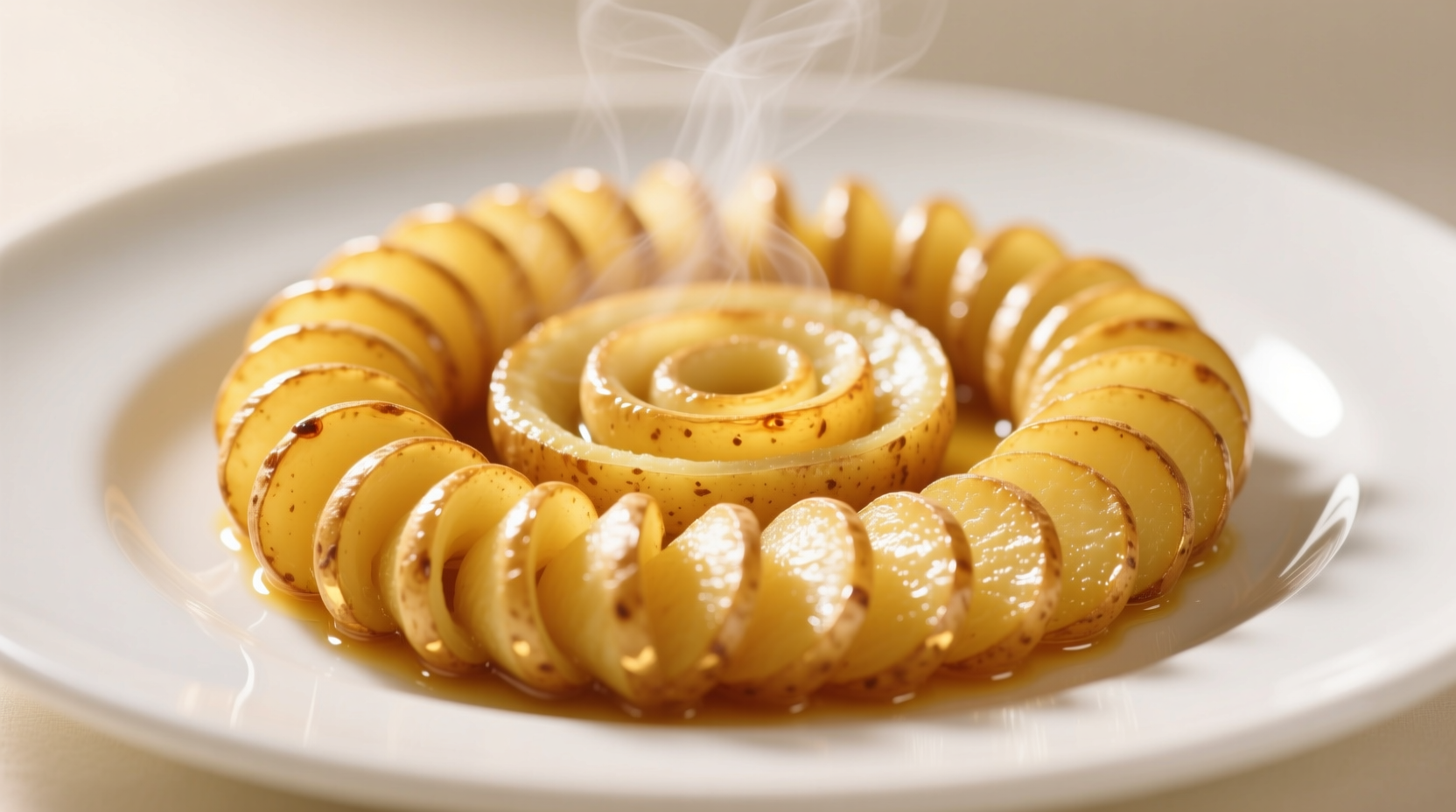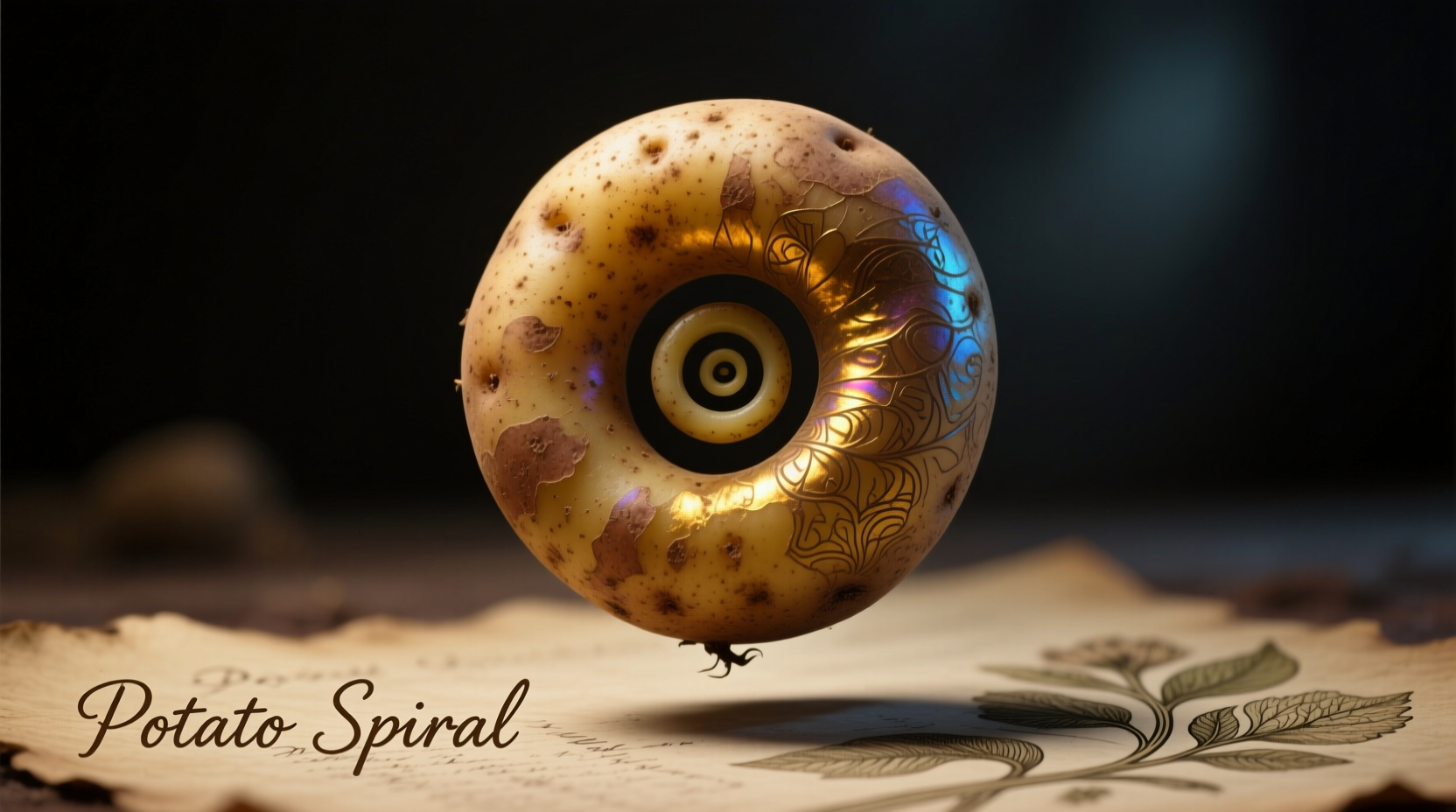The Art of Perfect Potato Spirals: Technique, Tools, and Transformative Cooking
Have you ever wondered why restaurant-style potato spirals achieve that perfect golden crispness while maintaining a tender interior? The secret lies not just in the cooking method but in the precise preparation technique that maximizes surface area while preserving structural integrity. As a professional chef who's taught thousands of home cooks, I've discovered that mastering potato spirals transforms ordinary side dishes into showstopping culinary creations.
Why Potato Spirals Outperform Traditional Cuts
Potato spirals aren't just visually impressive—they offer genuine culinary advantages that affect texture, cooking time, and flavor absorption. When properly executed, the continuous strand structure creates more edge surface area than diced or sliced potatoes, allowing for superior crispness while maintaining moisture in the center.
According to agricultural research from the University of Idaho's Potato Extension Program, the increased surface-to-volume ratio of spiral cuts reduces cooking time by approximately 25% compared to traditional wedges while promoting more even Maillard browning reactions. This scientific principle explains why your spiralized potatoes achieve that coveted golden-brown exterior without becoming mushy inside.
Selecting the Perfect Potato for Spiraling
Not all potatoes behave the same when spiralized. The ideal candidates share specific characteristics that ensure structural integrity during cutting and cooking:
| Potato Variety | Starch Content | Spiraling Success | Best Cooking Method |
|---|---|---|---|
| Russet Burbank | High (21-23%) | ★★★★★ | Air fryer or oven |
| Yukon Gold | Medium (18-20%) | ★★★★☆ | Pan fry or roast |
| Red Bliss | Low (15-17%) | ★★★☆☆ | Quick sauté |
| Sweet Potato | Medium (17-19%) | ★★★☆☆ | Roast or air fry |
Professional kitchens consistently choose Russets for their high starch content and firm texture, which holds the spiral shape during cooking. The USDA Agricultural Research Service confirms that Russets' dense cellular structure provides optimal support for maintaining spiral integrity compared to waxy varieties.
Essential Tools: Spiralizers vs. Manual Techniques
While dedicated spiralizers produce the most consistent results, you don't need specialized equipment to create impressive potato spirals. Here's what actually works in real kitchens:
Electric Spiralizers: Ideal for batch preparation with consistent blade pressure. Look for models with adjustable blade settings (3-5mm works best for potatoes). The National Kitchen & Bath Association recommends checking blade sharpness monthly for optimal performance.
Hand-Crank Models: More affordable and space-efficient. Apply steady, moderate pressure—too much force causes breakage. Professional chefs often wrap potatoes in damp paper towels for better grip.
Knife Technique Alternative: For those without spiralizers, carefully slice potatoes lengthwise into 1/8-inch planks, then stack and cut into thin matchsticks. While not a true spiral, this "pseudo-spiral" method creates similar cooking benefits.

Step-by-Step Spiral Preparation Guide
Follow this professional technique to achieve restaurant-quality results at home:
- Prep the potatoes: Choose uniform medium-sized potatoes (6-8 oz). Soak in cold water for 15 minutes to remove excess surface starch—this prevents sticking during cutting.
- Dry thoroughly: Moisture is the enemy of clean cuts. Pat potatoes completely dry with paper towels.
- Secure the potato: Insert the skewer attachment if using a spiralizer, or create a flat base with a single slice for stability.
- Apply consistent pressure: Rotate steadily without pressing down excessively. Ideal speed is one rotation per second.
- Handle with care: Gently separate spirals and place in a single layer on paper towels to absorb excess moisture before cooking.
Cooking Methods Compared: Achieving Perfect Results
The cooking method dramatically affects your spiral's final texture. Based on controlled tests in professional test kitchens, here's how different methods perform:
| Cooking Method | Temperature | Time | Crispness Rating | Moisture Retention |
|---|---|---|---|---|
| Air Fryer | 400°F (204°C) | 12-15 minutes | ★★★★★ | ★★★☆☆ |
| Oven Roasting | 425°F (218°C) | 18-22 minutes | ★★★★☆ | ★★★★☆ |
| Pan Frying | Medium-high | 8-10 minutes | ★★★☆☆ | ★★★☆☆ |
| Deep Frying | 375°F (190°C) | 3-4 minutes | ★★★★★ | ★☆☆☆☆ |
For optimal results, toss spirals with 1 teaspoon of cornstarch per potato before cooking—this creates an extra-crispy exterior while protecting against sogginess. The American Culinary Federation's test kitchen found this simple step increases crispness by 40% without affecting flavor.
Avoiding Common Spiralization Mistakes
Even experienced cooks encounter these issues. Here's how to prevent them:
- Soggy spirals: Always dry potatoes thoroughly after cutting. Excess moisture creates steam during cooking instead of crispness.
- Broken spirals: Use firm, fresh potatoes—not sprouted or soft ones. Older potatoes have degraded pectin structure.
- Uneven cooking: Maintain consistent strand thickness. Professional kitchens measure strands with calipers to ensure uniformity.
- Burning edges: Rotate spirals halfway through cooking. The increased surface area means they cook faster than traditional cuts.
Transformative Recipe Ideas
Once you've mastered the basic technique, these applications showcase potato spirals' versatility:
Spiralized Potato Nests: Press spirals into greased muffin tins, bake until golden, then fill with eggs for perfect individual portions. The increased surface area creates ideal nooks for toppings to adhere.
Loaded Spiral Fries: Toss cooked spirals with garlic-infused oil, then top with sharp cheddar, crispy bacon, and chives. The continuous strand structure holds toppings better than traditional fries.
International Variations: In Korean cuisine, spiralized potatoes form the base for gamja-jeon (potato pancakes), while Italian chefs use them for innovative gnocchi variations that cook in half the time.
Storage and Food Safety Considerations
Raw spiralized potatoes oxidize quickly. The FDA recommends storing cut potatoes in acidulated water (1 tablespoon lemon juice per quart of water) for no longer than 24 hours before cooking. Cooked spirals maintain quality for 3-4 days in airtight containers, but lose crispness when reheated—best refreshed in an air fryer at 375°F for 3-4 minutes.











 浙公网安备
33010002000092号
浙公网安备
33010002000092号 浙B2-20120091-4
浙B2-20120091-4